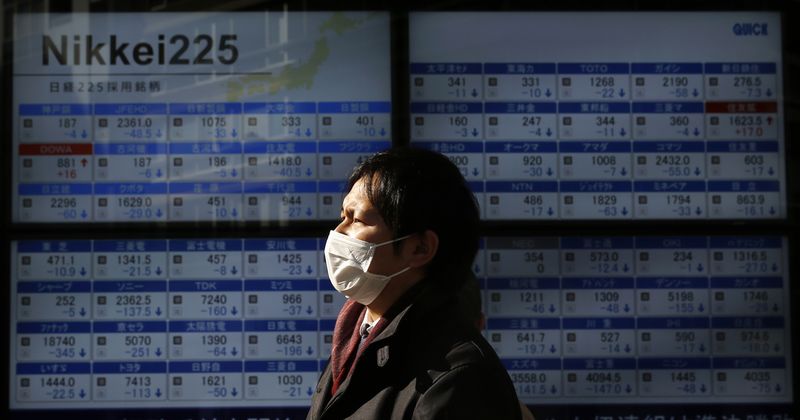Street Calls of the Week
Investing.com - Asian Pacific markets opened lower on Monday, as global indices retreated on Friday as US payrolls came in above expectations.
By 11:55 am AEDT (12:55 am GMT) the S&P/ASX 200 fell 1.3%, the KOSPI 200 lost 0.4% and the Nikkei 225 dipped 2.4%.
The US labor market showed a mixed performance on Friday, as non-farm payrolls for February rose by a robust 275k, surpassing expectations. However, the unemployment rate also climbed to 3.9%, indicating that the labor market, despite its strength, is gradually easing. US stocks ended the day lower in response to this report and concerns over the recent equity rally's sustainability. US bond yields experienced a slight decrease, but market expectations for a Federal Reserve rate cut by June remained consistent.
US share markets concluded lower on Friday, with soaring chip stocks reversing their course and a mixed labor market report showing more new jobs than expected, albeit with a rising unemployment rate. The S&P 500 and Nasdaq indexes briefly touched intraday record highs but lost momentum late in the morning. The Dow Jones index fell by 69 points or 0.2%, the S&P 500 lost 0.7%, and the Nasdaq shed 188 points or 1.2%. For the week, the S&P 500 lost 0.3%, the Nasdaq fell 1.2%, and the Dow slid 0.9%, marking the Dow's worst week since October.
In Europe, share markets closed slightly lower on Friday. The continent-wide FTSEurofirst 300 edged down by 0.03% but was up 1.2% over the week. In London, the UK FTSE 100 index slipped 0.4% and dipped 0.3% for the week.
US government bond yields rallied on Friday following the mixed labor market report. Weak underlying details heightened expectations that the US Federal Reserve is nearing a decision to cut interest rates. Austan Goolsbee, the President of the Federal Reserve Bank of Chicago, anticipates that policymakers will lower interest rates this year as inflation cools. The US Senate approved a $US460bn funding package, sending it to US President Joe Biden to sign before a looming partial government shutdown on Saturday. The US 10-year Treasury yield fell by 1 point to 4.08%, and the US 2-year Treasury yield slid 4 points to 4.48%. For the week, yields fell between 6 points and 11 points.
Currencies varied against the US dollar in European and US trade. The Euro rose from $US1.0925 to $US1.0976 and was near $US1.0935 at the US close. The Aussie dollar fell from US66.65 cents to US66.15 cents and was near US66.25 cents at the US close. The Japanese yen firmed from 148.03 yen per US dollar to JPY146.48 and was near JPY147.05 at the US close.
Global oil prices closed 1% lower on Friday and fell further for the week as traders remained cautious of soft Chinese demand, even as producer group OPEC+ extended supply cuts. The Brent crude price fell by US88 cents or 1.1% to $US82.08 a barrel. Moreover, the US Nymex crude price shed US92 cents or 1.2% to $US78.01 a barrel. Both benchmarks fell in the week, with Brent down 1.8% and the Nymex 2.5% lower.
Base metal prices fell on Friday as speculators locked in profits after data showed US job growth accelerated in February. Copper futures fell 0.9% and aluminium futures lost 0.4%. However, prices rose between 0.2% and 0.8% over the week. The gold futures price soared $US20.30 or 0.9% to a fresh record high of $US2,185.50 an ounce as US jobs data boosted bets of an early US rate cut. Spot gold was trading near $US2,177.50 an ounce at the US close. Bullion rose 4.3% last week. Iron ore futures dipped US91 cents or 0.8% to $US117.05 a tonne on concerns over the strength of China's construction sector recovery. However, iron ore gained 2.8% for the week.
